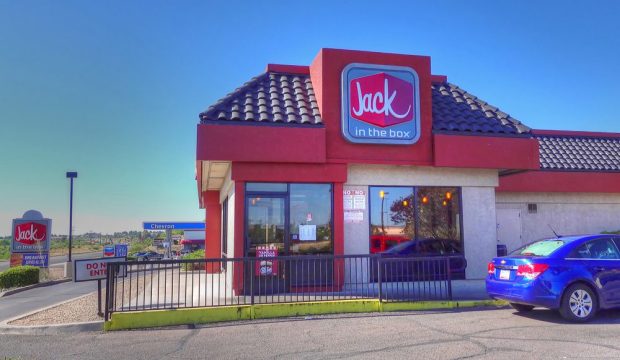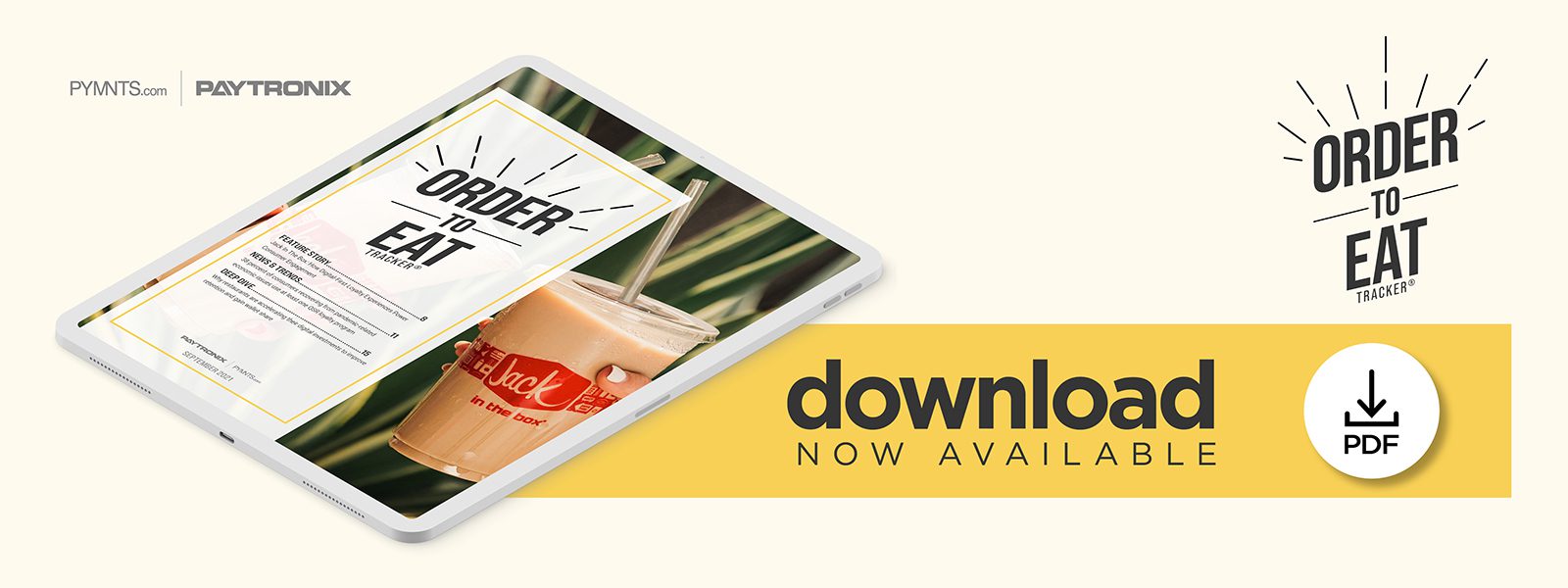Jack in the Box: How Digital-First Loyalty Experiences Power Consumer Engagement

Timing is everything in the restaurant business, and pushing the right offer at the right time not only drives sales, but turns buyers into loyal repeat customers. In the Order To Eat Tracker, Jack in the Box’s Ryan Ostrom tells PYMNTS that leveraging loyalty data to create personalized incentives is the secret sauce needed to attract digital-first diners.
Catching the attention of consumers who are spoiled for choice is no easy feat, especially in the restaurant space, in which diners not only have their pick of eateries but also are presented with numerous channels from which they can order.
Today’s restaurants must offer potential diners fresh, appetizing fare while also ensuring order and pickup or delivery is as easy as possible and feels personal — even when customers are ordering through impersonal digital channels, explained Ryan Ostrom, chief marketing officer for fast food restaurant Jack in the Box. The San Diego-based burger chain has focused on digital channels first and foremost with its recently launched loyalty program, taking advantage of the wealth of customer data present online to help build out offers that speak to diners’ preferences.
“[The] QSR business is a big cash business and, historically, customer data and understanding who our consumers are, [who] our guests [are], has not been widely available,” he explained. “And through these digital platforms, these digital use cases, we now can really provide more personalized experiences, personalized offers and better communication, as I like to say, ‘at the point of hunger’ with our core guests, by building these digital relationships with them. That’s why we moved with urgency with loyalty.”
Creating a digital-first loyalty experience can help eateries gain the interest — and hopefully the continued business — of consumers who are expecting to order how and where they like from their chosen eateries. This means QSRs must keep track of the perks they are offering within their loyalty programs as well to ensure they are matching customers’ shifting ordering and payment preferences.
Winning the Digital Loyalty Game
Diners today are growing more comfortable turning to their phones first when they are on the hunt for meals, making an easy-to-use mobile app ordering experience a priority for eateries, Ostrom said. The trick is to keep customers coming back, which is why providing loyalty incentives that feel personalized can present a key advantage to attracting digital-first diners.
“At the end of [the] day, digital is the forefront of our experience and so, right now, it’s all about getting our core guests to download and engage with the brand,” he said. “So, when you download the app, you receive 25% off your first [app] purchase … and, right now, [customers earn loyalty] through digital channels [by] ordering through our app.”
Jack in the Box is far from the only QSR leaning harder on loyalty to engage consumers. Restaurants including McDonald’s, Burger King and Wendy’s all have expanded their loyalty programs nationally to win consumers’ favor, putting more pressure on restaurants to craft rewards programs that speak to shifting consumer desires. Jack in the Box will be bringing back a popular menu item this October, for example, and will be offering its loyalty members exclusive rewards and other perks tied to the resurgence of this new mystery item in a bid to strengthen the relationship between the brand and these members, Ostrom explained. The chain also will be examining how it can craft offers and rewards for loyalty members across all its channels to keep their interest.
“That’s really the benefit of a loyalty program within our channel, really building that direct relationship with our guests,” Ostrom said. “But we do plan on making sure that they have the value or [that the] offers will be available in-store and online, and we’ll have different offers in different channels. It’s all about understanding the power of the data and the information that we get [about] what channels [customers] like to purchase in. What are the key drivers that get them to come purchase, and how do we leverage that data to provide … guests the best offer at the right time and get them to engage and to purchase?”
Consumers may be more comfortable interacting with eateries through digital channels, but that does not mean they have fully forsaken the in-store dining experience. Bringing loyalty into physical stores therefore is the next phase for Jack in the Box as it looks to improve engagement with consumers who may be digital-first but are far from digital-only.
Taking Loyalty Omnichannel
Many customers are using drive-thrus to order their meals or order online, pickup in store features, meaning QSRs must continue to take the physical channel into account as they look to gain the loyalty of more customers. This is causing Jack in the Box to reconsider the design of its physical locations as well as how to tie its loyalty program into these next-generation eateries, Ostrom said.
“Right now, as we think about the in-store experience, it’s really about making sure that people who purchase in stores still have the same offers and deals to get them to want to go to our stores if that’s where their preferred [purchase] method [is],” he explained. “I think, eventually, where you see this evolving … really similar to online, is that recommendation engine, which is, generally, would you like [a] large fry with that because, generally, this person upsells or doesn’t upsell. I know a lot of other restaurants that execute [these kinds of] recommendation engines. It’s really about how to bring that to life, and that’s in our future. That’s not immediate. I think, ultimately, our goal is to provide the best value for our guests and consistency across digital and in-store, which is our next step within our loyalty program.”
Bringing recommendations and other such perks to loyal customers regardless of channel may help to bring that critical sense of personalization to consumers who often are heading online first to order food. This may be a key way QSRs can better engage with consumers who are expecting to dine their way, regardless of how they are interacting with their favorite restaurants.

